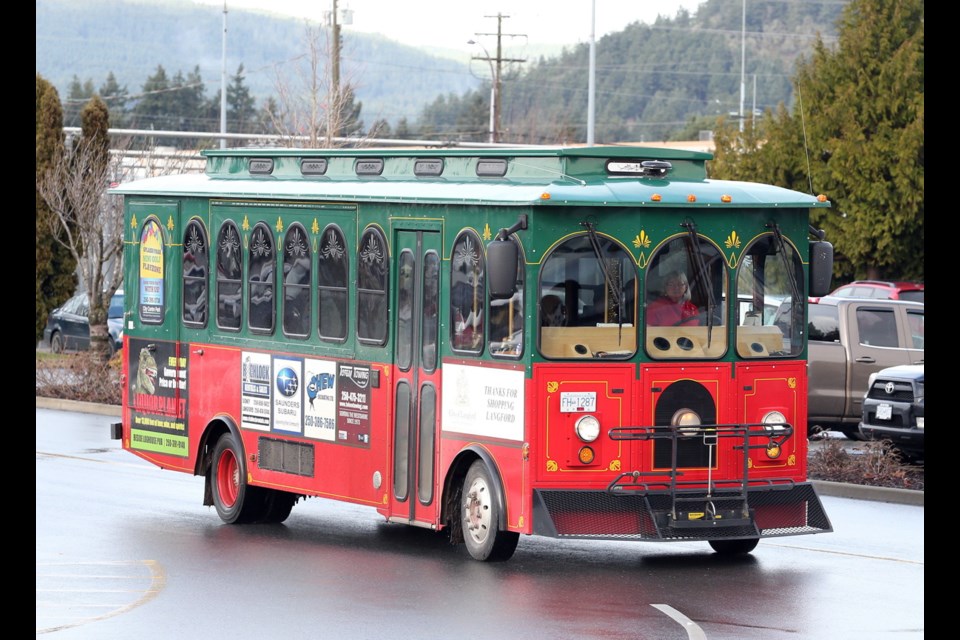Langford’s rubber-wheeled trolley service is finding its legs after more than eight years of service.
But with operating costs projected at more than $220,000 a year, the municipality may have to look at a minimum charge for the service that currently runs on donations, said Mayor Stew Young.
“Maybe we can do a minimum charge or do a bit of a campaign [suggesting] people throw a loonie or a twoonie every time,” said Young, adding that the municipality will have to take a close look in the hope of finding some more cost savings.
“We might kind of look at revamping it a bit to tighten up on routes that make sense,” Young said.
The 2016 budget for the trolley operations is proposed to be increased to $222,400 from $219,055. Staff say that based on the 2015 ridership, the cost per rider is $4.63, which they say is better than B.C. Transit operating costs. “To be perfectly honest, I’d love it to be $3,” Young said.
Still, ridership is climbing after years in a slump. “[Ridership] is going up every year now, fairly steady,” Young said.
Langford’s “community trolley service” — not really a trolley at all but an antique styled diesel bus — began operations on July 7, 2007 and carried about 16,600 passengers in its first year.
The trolleys provide transportation on a route not offered by B.C. Transit, and are seen as a way to promote Langford’s recreational and shopping facilities.
Initially, ridership grew, hitting a peak of about 34,365 in 2008. But then ridership slid, dropping to 20,751 in 2012, according to a staff report.
A number of routes were tried before the current one was settled on. The trolley loops through Langford with stops at recreation and retail centres such as City Centre Park, Westshore Town Centre, Goldstream, Langford Town Centre, Millstream Village and Costco. And this year the service is headed to its best year ever, with about 43,550 passengers. But municipal staff note that the trolleys are aging and “significant repairs have been done to
them this year.”
Two of the trolleys have clocked 500,000 kilometres while the latest one is at 300,000 km. “Combined, the trolleys drive 100,000 km per year. We will continue to maintain the trolleys and balance the kilometres to extend their operation; however,
consideration of a replacement program will need to be undertaken in the coming years,” says a staff report.
The trolley operation expenditures were $219,055 in 2015. Anticipated revenues from advertising are about $6,000 and donations and rentals are expected to be $11,523.



